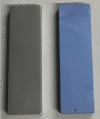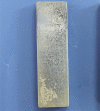Iodine-doped TiO2 nanotube coatings: a technique for enhancing the antimicrobial properties of titanium surfaces against Staphylococcus aureus
- PMID: 37950251
- PMCID: PMC10636994
- DOI: 10.1186/s13018-023-04354-8
Iodine-doped TiO2 nanotube coatings: a technique for enhancing the antimicrobial properties of titanium surfaces against Staphylococcus aureus
Abstract
Background: Implant-related infections are a challenging complication of orthopedic surgery, primarily due to the formation of bacterial biofilms on the implant surface. An antibacterial coating for titanium implants was developed to provide novel insights into the prevention and treatment of implant-related infections.
Methods: Titanium plates were coated with TiO2 nanotubes by anodization, and iodine was doped onto the coating via electrophoretic deposition. The obtained plates were characterized using a range of analytical techniques. Subsequently, Staphylococcus aureus was inoculated onto the surfaces of untreated titanium plates (control group), TiO2-nanocoated titanium plates (TiO2 group), and iodine-doped TiO2-nanocoated titanium plates (I-TiO2 group) to compare their antibacterial properties.
Results: Twenty-four hour in vitro antimicrobial activity test of the I-TiO2 group against Staphylococcus aureus was superior to those of the other groups, and this difference was statistically significant (P < 0.05).
Conclusions: This coating technology provides a new theoretical basis for the development of anti-infective implants against Staphylococcus aureus in orthopedics.
Keywords: Antibacterial coating; Iodine; TiO2 nanotubes; Titanium plate.
© 2023. The Author(s).
Conflict of interest statement
The authors declare no competing interests.
Figures








References
-
- Fricka KB, Yep PJ, Donnelly PC, Mullen KJ, Wilson EJ, Hopper RH, Jr, Engh CA., Jr Timing and factors associated with revision for infection after primary total knee arthroplasty based on American Joint Replacement Registry Data. J Arthroplasty. 2023;6(2):S308–S313. doi: 10.1016/j.arth.2023.03.054. - DOI - PubMed
MeSH terms
Substances
Grants and funding
- 2021JQ06/Hospital-Level Project of the 900th Hospital of the Joint Logistics Support Force of the PLA
- 2022MS03/Hospital-Level Project of the 900th Hospital of the Joint Logistics Support Force of the PLA
- 2022MS03/Hospital-Level Project of the 900th Hospital of the Joint Logistics Support Force of the PLA
LinkOut - more resources
Full Text Sources
Medical

